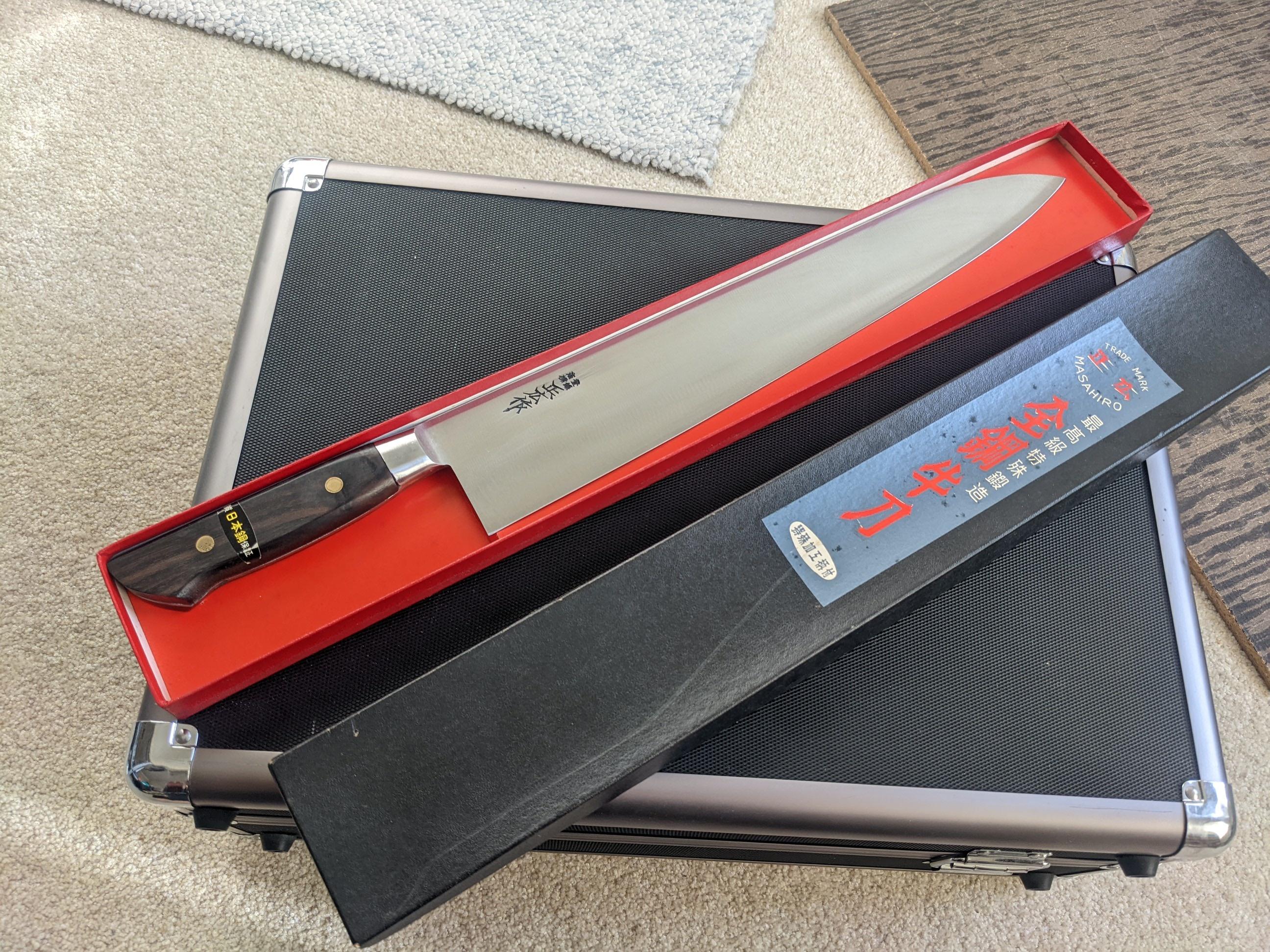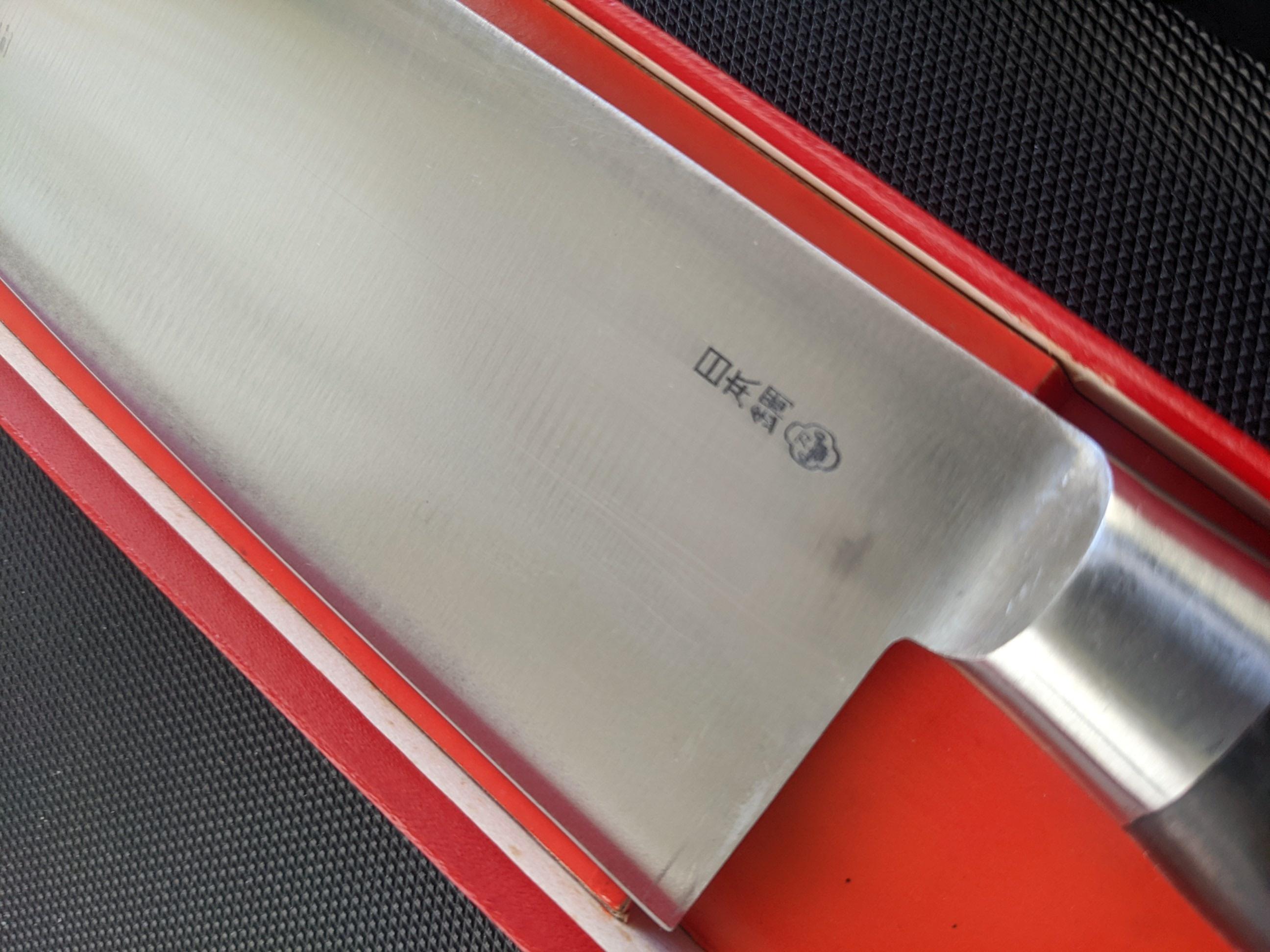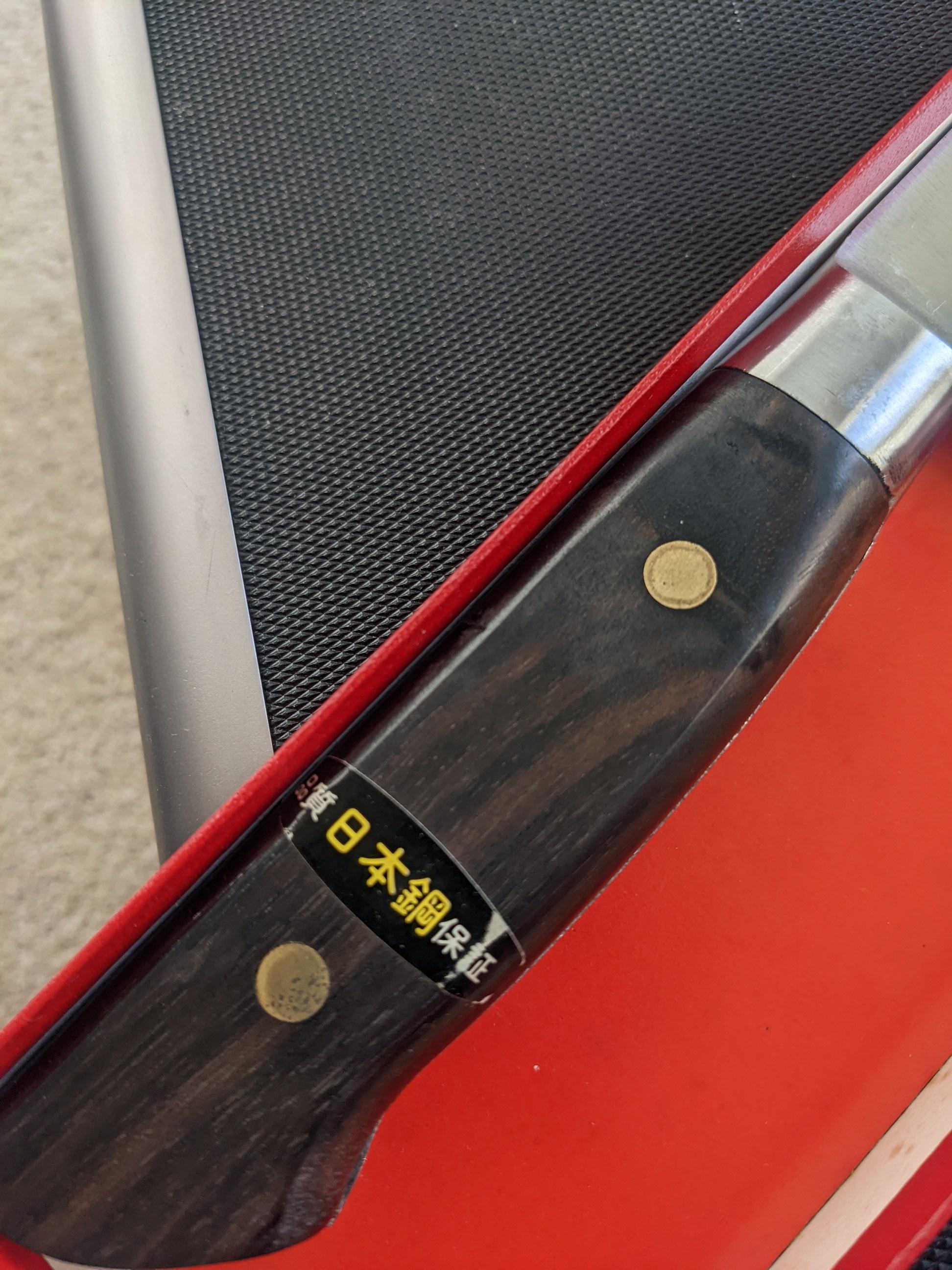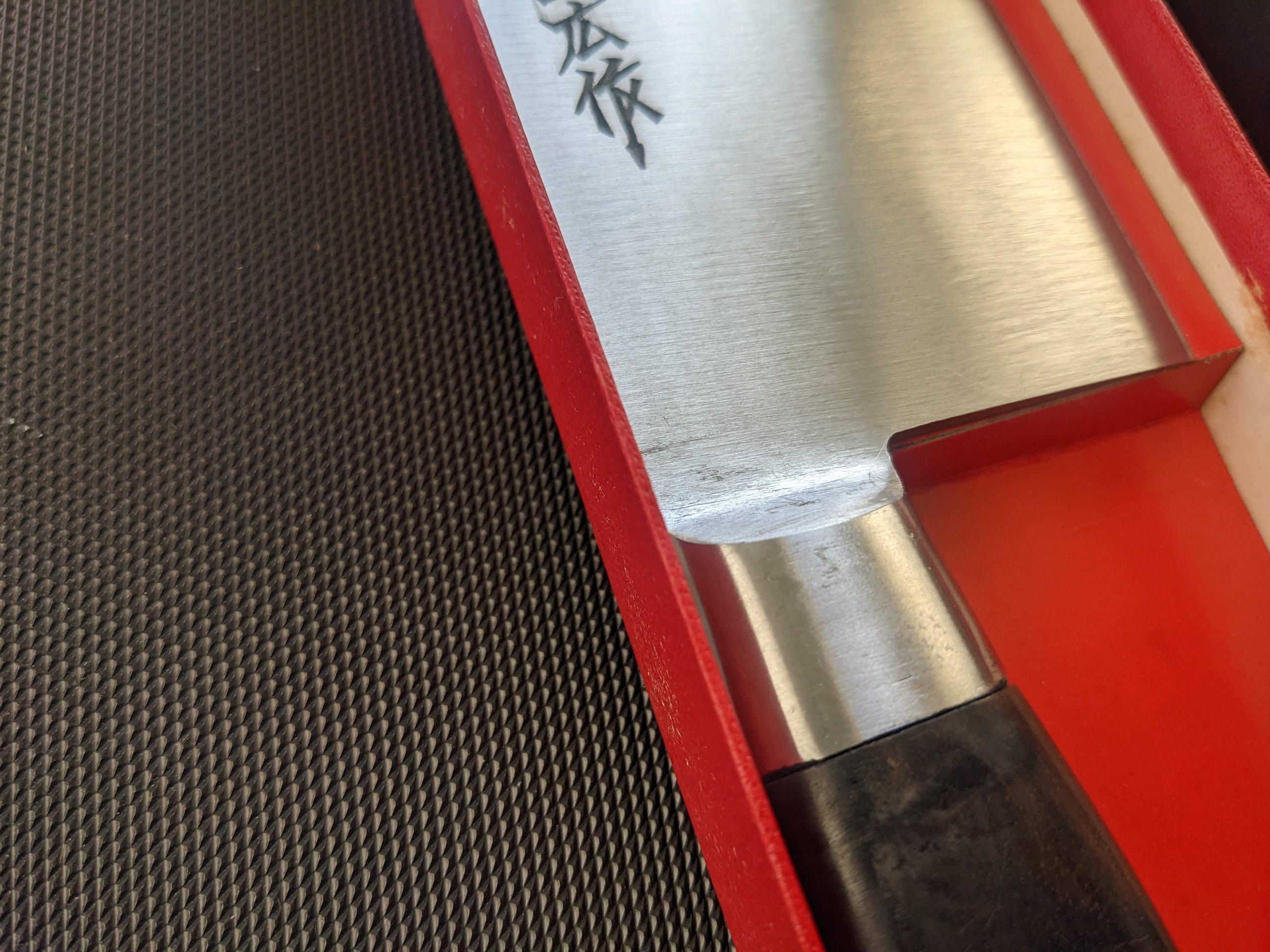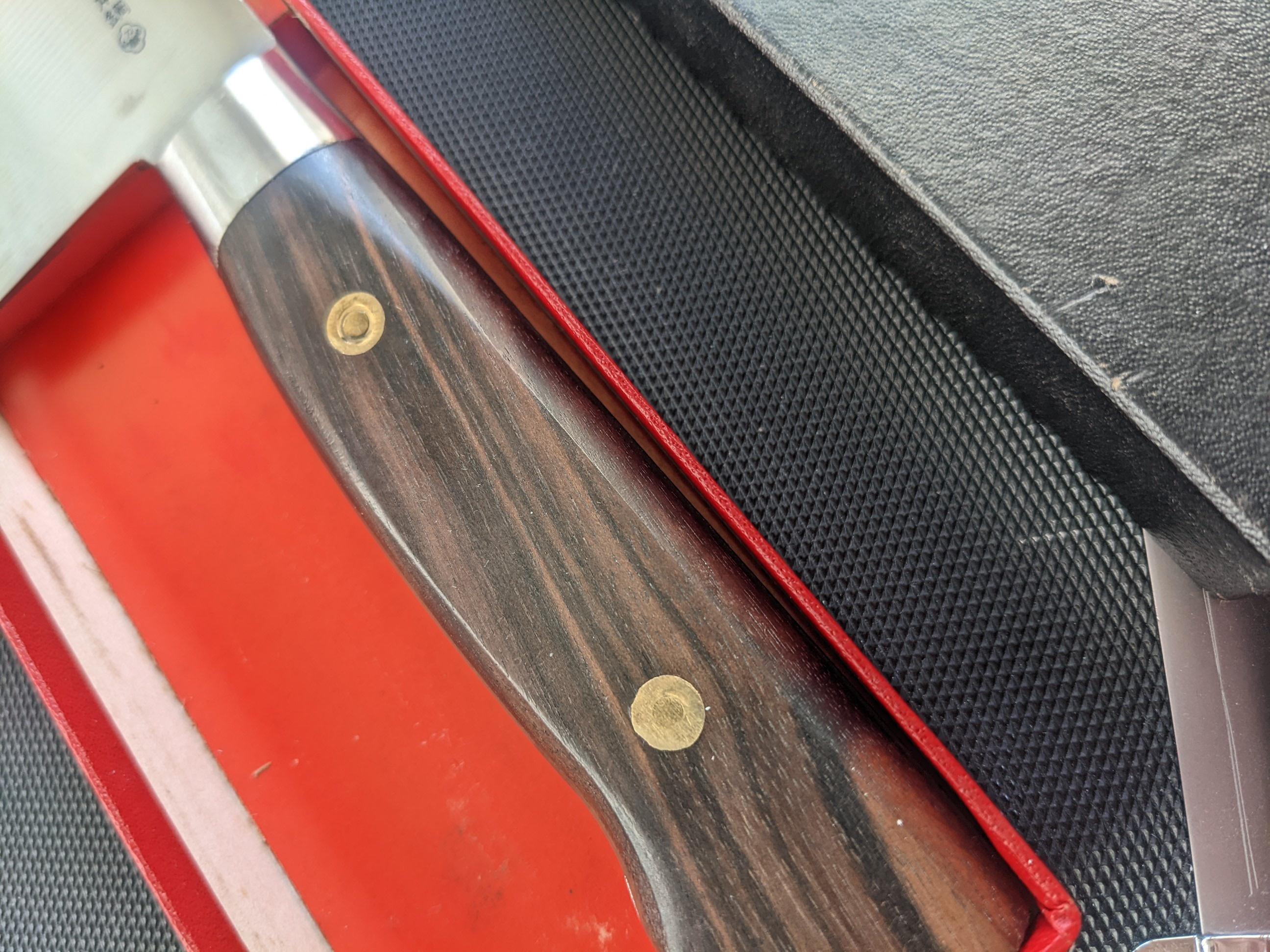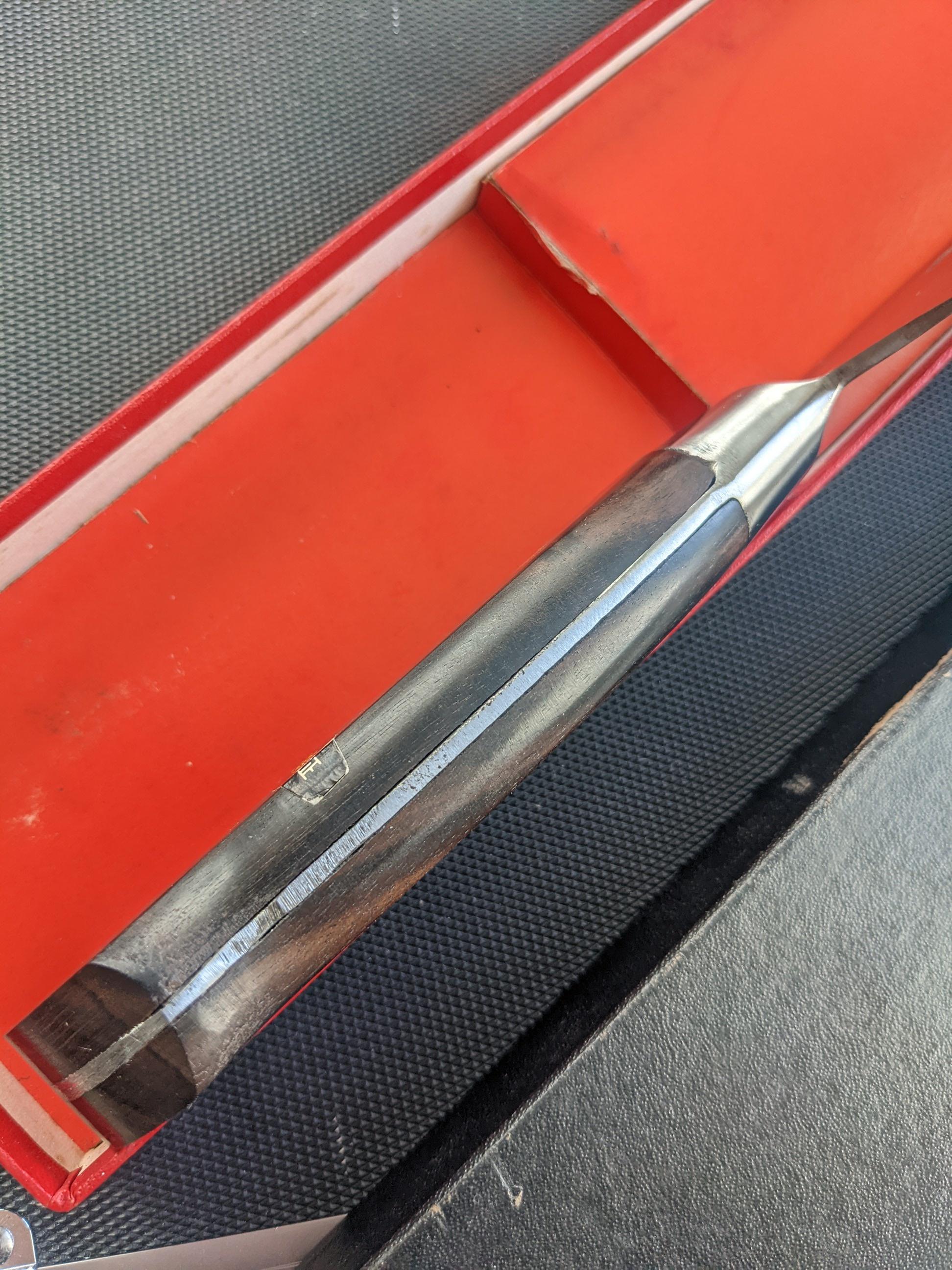kennyc
Well-Known Member
Long story short - slightly upset at leaving my LKS without anything new so I impulse bought this instead.
The currently-available version has 3 silver rivets and pakkawood slabs - this one has 2 brass rivets and natural slabs
Closest one I could find was another thread on this forum SOLD - Refurbished Masahiro carbon sujihiki
1. Is it carbon or stainless? Any way to tell without trying to intentionally-patina it? The thread above lists its knife as carbon - The seller of mine says this gyuto is stainless.
2. Does it have any historical/collectible value which should prevent me from using it? I don't have any legitimate use for it (traditional gyuto tasks - protein portioning?), it would mostly be a wall hanger and entertain my inner child for being its ridiculous size.
giving my zKramer complex:
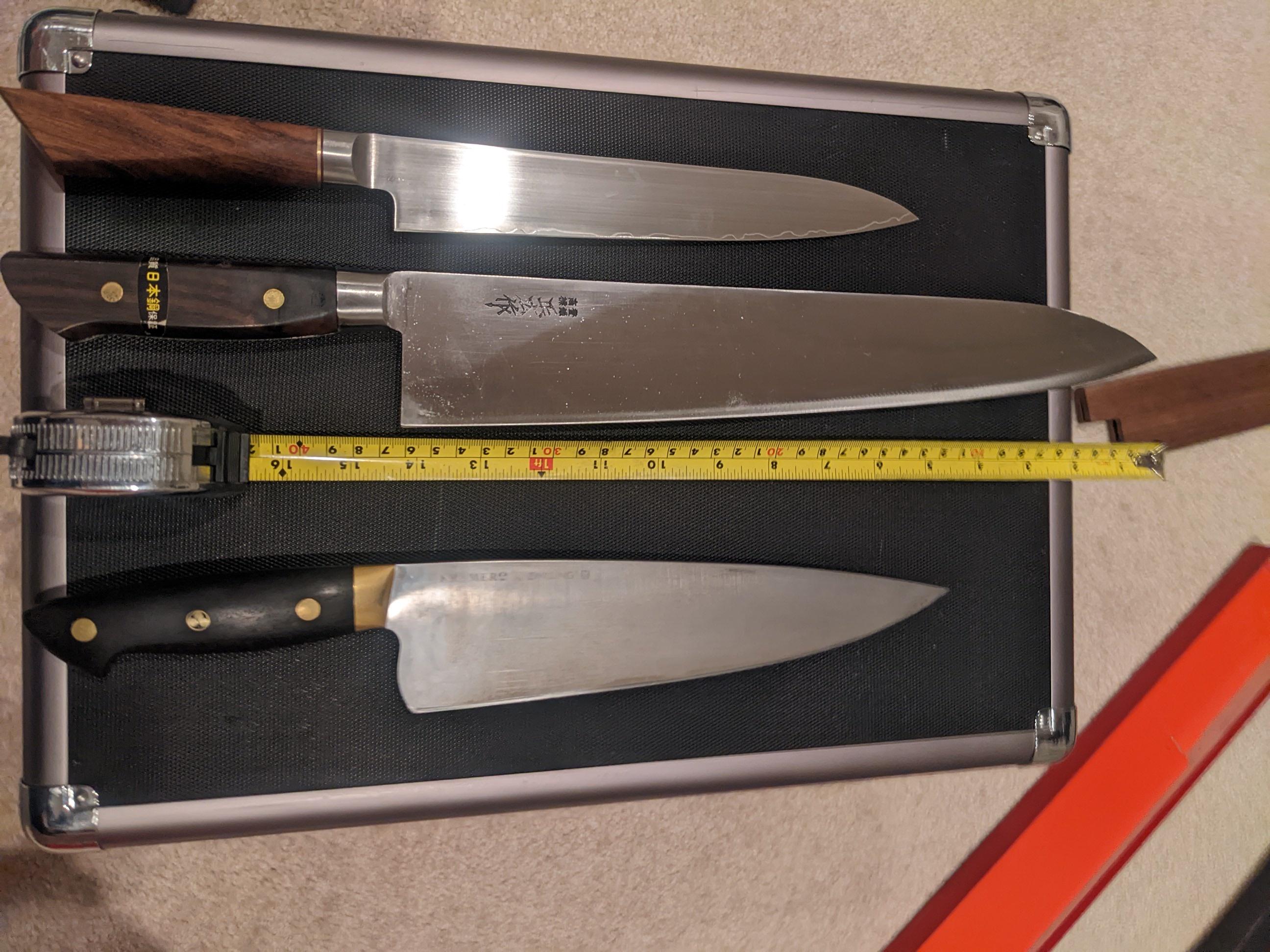
The currently-available version has 3 silver rivets and pakkawood slabs - this one has 2 brass rivets and natural slabs
Closest one I could find was another thread on this forum SOLD - Refurbished Masahiro carbon sujihiki
1. Is it carbon or stainless? Any way to tell without trying to intentionally-patina it? The thread above lists its knife as carbon - The seller of mine says this gyuto is stainless.
2. Does it have any historical/collectible value which should prevent me from using it? I don't have any legitimate use for it (traditional gyuto tasks - protein portioning?), it would mostly be a wall hanger and entertain my inner child for being its ridiculous size.
giving my zKramer complex:

Last edited:





